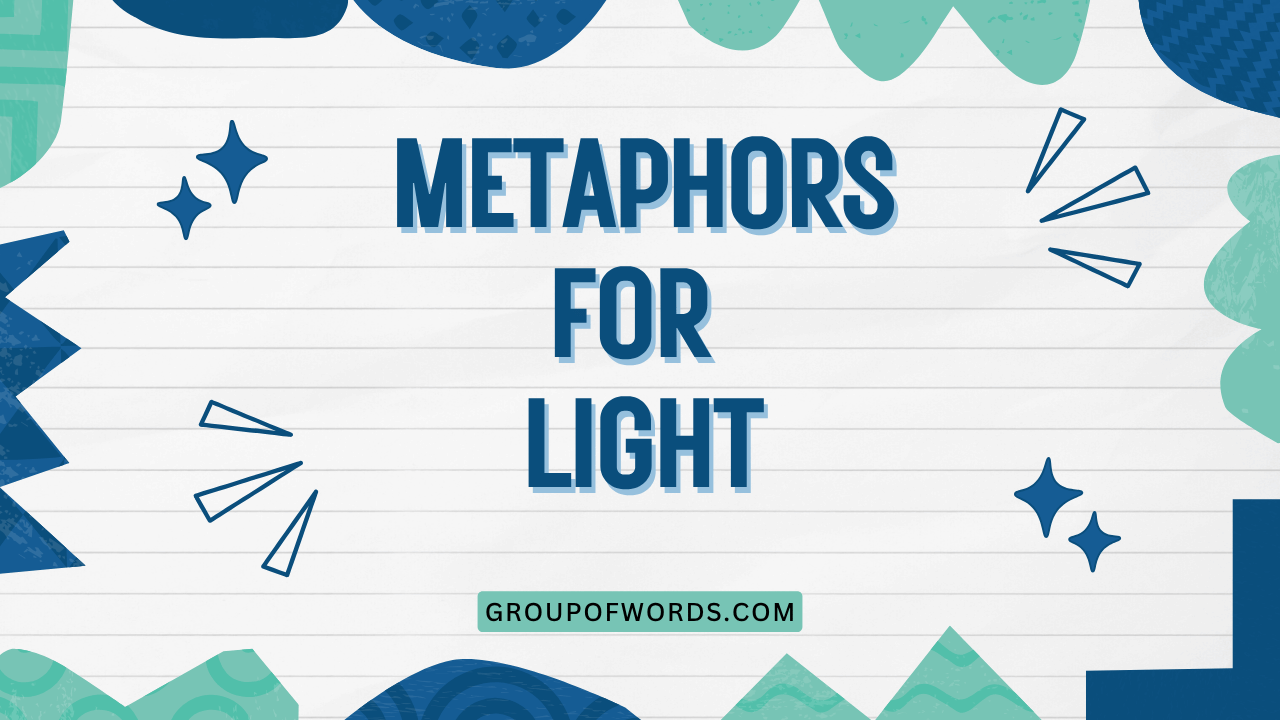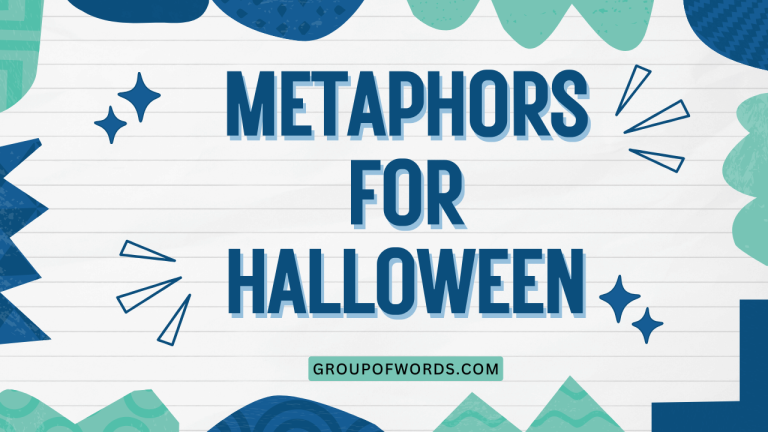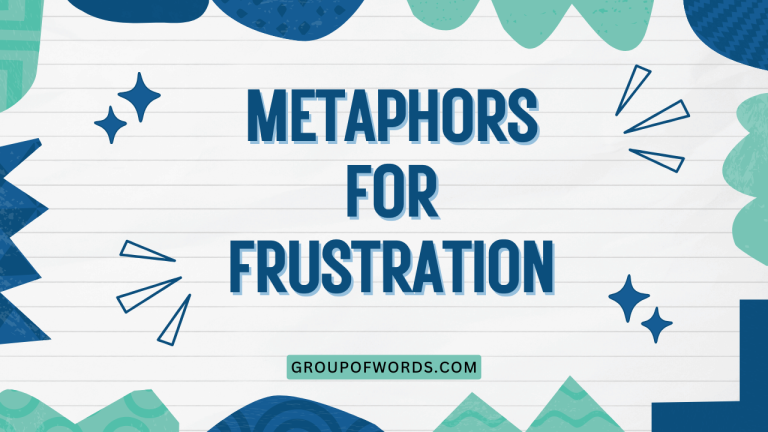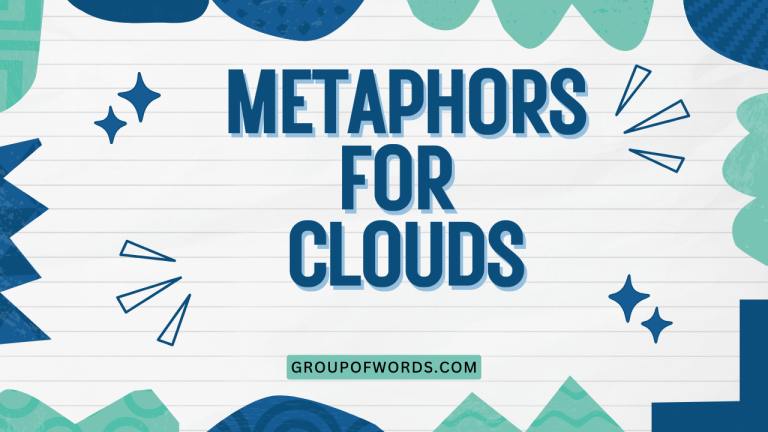Illuminating Language: Mastering Metaphors for Light
Metaphors are powerful tools in the English language, allowing us to express abstract ideas and emotions in vivid and relatable ways. Among the most common and evocative metaphors are those that use light as a central image.
Understanding these metaphors not only enriches our comprehension of literature and everyday conversation but also enhances our ability to communicate with greater precision and impact. This article delves into the world of metaphors for light, exploring their diverse forms, functions, and applications.
Whether you’re a student, a writer, or simply someone who appreciates the beauty of language, this guide will illuminate your understanding and skills.
This comprehensive guide is designed for English language learners, writers, and anyone interested in enhancing their understanding of figurative language. We will explore the various types of light metaphors, providing detailed examples and practical exercises to solidify your grasp of this essential aspect of English grammar and rhetoric.
By the end of this article, you’ll be able to identify, interpret, and effectively use metaphors for light in your own writing and communication.
Table of Contents
- Introduction
- Definition of Metaphors for Light
- Structural Breakdown of Light Metaphors
- Types and Categories of Light Metaphors
- Examples of Light Metaphors
- Usage Rules for Light Metaphors
- Common Mistakes with Light Metaphors
- Practice Exercises
- Advanced Topics in Light Metaphors
- Frequently Asked Questions
- Conclusion
Definition of Metaphors for Light
A metaphor is a figure of speech that directly compares two unrelated things, suggesting a similarity between them. It asserts that one thing *is* another, not literally, but in a figurative sense.
Metaphors for light use the concept of light – its properties, effects, and associations – to describe or represent something else, typically an abstract idea, emotion, or experience. Light, with its inherent qualities of brightness, clarity, and illumination, serves as a powerful symbol for understanding, hope, goodness, truth, and life itself.
The function of light metaphors is to create vivid imagery, evoke emotional responses, and convey complex ideas in a more accessible and engaging manner. By associating abstract concepts with the concrete image of light, writers and speakers can make their message more impactful and memorable.
These metaphors are pervasive in literature, poetry, everyday speech, and even scientific discourse, highlighting their versatility and importance in communication. The contexts in which light metaphors are used are incredibly diverse, ranging from describing a sudden realization (“a lightbulb moment”) to expressing moral purity (“a shining example”) or illustrating the vitality of existence (“the light of life”).
Structural Breakdown of Light Metaphors
The structure of a light metaphor typically involves two key components: the tenor and the vehicle. The tenor is the subject or concept being described, while the vehicle is the image of light used to represent it. The connection between the tenor and the vehicle is based on shared qualities or associations. For example, in the metaphor “her eyes were shining beacons,” the tenor is “her eyes,” and the vehicle is “shining beacons.” The shared quality is brightness and guidance.
Understanding the structural elements allows for a deeper appreciation of how these metaphors work. The effectiveness of a light metaphor depends on the audience’s ability to recognize the connection between the tenor and the vehicle.
A well-crafted metaphor will resonate with the reader, creating a meaningful and insightful connection. The absence of the connection can lead to confusion or a breakdown in communication.
Here’s a further breakdown:
- Tenor: The subject being described (e.g., understanding, hope).
- Vehicle: The image of light used to represent the subject (e.g., a beacon, a spark).
- Ground: The shared qualities or associations between the tenor and the vehicle (e.g., clarity, guidance).
The ground is the commonality that makes the metaphor effective. Without a recognizable ground, the metaphor falls flat.
Consider the metaphor “His mind was a dark room.” The tenor is “his mind,” the vehicle is “a dark room,” and the ground is the lack of clarity or understanding. The darkness symbolizes the absence of knowledge or insight.
Types and Categories of Light Metaphors
Light metaphors can be categorized based on the specific qualities of light they emphasize and the concepts they are used to represent. Here are some common categories:
Light as Knowledge and Understanding
This category uses light to represent knowledge, understanding, and enlightenment. The idea is that light dispels darkness, just as knowledge dispels ignorance.
These metaphors often involve images of illumination, clarity, and insight.
Light as Hope and Guidance
Light is often used to symbolize hope, optimism, and guidance through difficult times. These metaphors evoke a sense of direction, safety, and the possibility of a brighter future.
Images of beacons, stars, and sunrises are commonly used in this context.
Light as Goodness and Purity
Light can also represent moral goodness, purity, and righteousness. This type of metaphor often associates light with virtuous behavior, integrity, and spiritual enlightenment.
Images of shining stars, halos, and pure light are often used.
Light as Truth and Clarity
In this category, light is used to symbolize truth, honesty, and clarity. The idea is that light reveals things as they truly are, exposing falsehood and deception.
These metaphors often involve images of bright light, transparency, and revelation.
Light as Life and Energy
Light can represent life, vitality, and energy. This type of metaphor often associates light with the spark of life, the warmth of the sun, and the vibrancy of existence.
Images of sunlight, flames, and glowing objects are commonly used.
Examples of Light Metaphors
The following sections provide examples of light metaphors categorized by their specific meanings. Each table includes a variety of examples to illustrate the different ways light can be used metaphorically.
Examples of Light Metaphors for Knowledge
This table illustrates how light metaphors are used to represent knowledge, understanding, and enlightenment. These examples demonstrate the power of light in conveying abstract concepts related to intellectual insight.
| Metaphor | Explanation |
|---|---|
| A lightbulb moment | A sudden realization or understanding. |
| Shedding light on the subject | Providing clarity and understanding about a topic. |
| Illuminating the truth | Revealing the truth and making it clear. |
| The dawn of understanding | The beginning of comprehension. |
| A spark of insight | A sudden and brilliant idea. |
| Enlightened thinking | Thinking that is based on reason and knowledge. |
| The light of reason | Using reason to understand something. |
| A beacon of knowledge | A source of great knowledge and wisdom. |
| The lamp of learning | Education and the pursuit of knowledge. |
| A glimmer of hope | A small amount of hope or possibility. |
| Piercing the darkness of ignorance | Overcoming a lack of knowledge through education. |
| A shining example | A clear and admirable model to follow. |
| The sunbeam of enlightenment | Sudden and complete understanding. |
| A flash of inspiration | A sudden, brilliant idea. |
| Waking up to the light | Becoming aware of the truth or reality. |
| Bringing something to light | Revealing or uncovering something. |
| The bright side of the story | The positive aspects of a situation. |
| The radiant mind | A mind full of knowledge and brilliance. |
| A shaft of understanding | A sudden clarity of understanding. |
| The illuminating lecture | A lecture that provides great insight and clarity. |
| His explanation cast light on the problem. | His explanation helped to understand the problem. |
Examples of Light Metaphors for Hope
This table provides examples of how light metaphors are used to represent hope, optimism, and guidance. These metaphors often evoke a sense of direction and the possibility of a positive future.
| Metaphor | Explanation |
|---|---|
| A beacon of hope | A source of hope and guidance in difficult times. |
| The light at the end of the tunnel | The prospect of a positive outcome after a long period of difficulty. |
| A ray of sunshine | A source of joy and happiness. |
| The dawn of a new era | The beginning of a promising period. |
| A guiding light | Someone or something that provides direction and support. |
| A glimmer of hope | A small amount of hope or possibility. |
| Shining a light on the path forward | Providing guidance and clarity for the future. |
| The sun will rise again | Things will get better in the future. |
| A spark of optimism | A small amount of hopefulness. |
| The morning star | Symbol of hope before a new day. |
| The lamp of faith | Faith as a source of hope and guidance. |
| A flicker of possibility | A small chance of something good happening. |
| Bathing in the light of future | Envisioning a bright and hopeful future. |
| The bright future | A promising and optimistic future. |
| A new dawn | A fresh start with new hope. |
| Radiant expectations | Strong and positive hopes for the future. |
| A sunlit path | A clear and hopeful way forward. |
| The hopeful sunrise | The beginning of a day filled with promise. |
| A flash of promise | A brief but significant indication of future success. |
| The illuminating prospect | A clear and encouraging outlook. |
| Her smile was a ray of sunshine in his day. | Her smile brought him happiness and hope. |
Examples of Light Metaphors for Goodness
This table illustrates how light metaphors are used to represent moral goodness, purity, and righteousness. These metaphors often associate light with virtuous behavior and spiritual enlightenment.
| Metaphor | Explanation |
|---|---|
| A shining example | A clear and admirable model to follow. |
| The light of virtue | Goodness and moral excellence. |
| A beacon of morality | A symbol of ethical behavior. |
| Pure as sunlight | Innocent and untainted. |
| A radiant soul | A person with inner goodness and kindness. |
| The light of their spirit | The goodness and vitality within someone. |
| Illuminating the path of righteousness | Guiding others towards moral behavior. |
| Glowing with integrity | Displaying honesty and strong moral principles. |
| The sunbeam of kindness | Acts of kindness that brighten someone’s day. |
| A halo of goodness | An aura of moral purity. |
| Sparkling with virtue | Displaying moral excellence in one’s actions. |
| The luminary of ethics | A leading figure in moral principles. |
| Bathed in the light of grace | Surrounded by divine favor and goodness. |
| A bright conscience | A clear and untroubled sense of right and wrong. |
| A new dawn of morality | The beginning of a period of increased ethical behavior. |
| Radiant actions | Good deeds that shine brightly. |
| A sunlit heart | A heart full of kindness and compassion. |
| The hopeful glow | An inner light of goodness and hope. |
| A flash of righteousness | A sudden display of virtuous behavior. |
| The illuminating influence | A positive and morally uplifting impact on others. |
| Her kindness shone like a light. | Her kindness was very apparent and commendable. |
Examples of Light Metaphors for Truth
This table provides examples of how light metaphors are used to represent truth, honesty, and clarity. These metaphors often involve images of bright light, transparency, and revelation.
| Metaphor | Explanation |
|---|---|
| Bringing something to light | Revealing or uncovering something. |
| Shedding light on the truth | Making the truth clear and understandable. |
| Illuminating the facts | Making the facts clear and evident. |
| The light of day | The truth being revealed. |
| A bright revelation | A clear and significant discovery of the truth. |
| The light of evidence | Evidence that clarifies the truth. |
| Shining a light on corruption | Exposing corrupt practices. |
| A clear as daylight | Obvious and easily understood. |
| The sunbeam of honesty | Acts of honesty that bring clarity. |
| A halo of truth | An aura of authenticity and honesty. |
| Sparkling with transparency | Displaying openness and honesty in one’s actions. |
| The luminary of integrity | A leading figure in upholding truth and honesty. |
| Bathed in the light of honesty | Surrounded by truthfulness and integrity. |
| A bright explanation | A clear and truthful explanation. |
| A new dawn of disclosure | The beginning of a period of increased openness. |
| Radiant honesty | Actions that display truthfulness clearly. |
| A sunlit account | A clear and honest narrative. |
| The hopeful revelation | A discovery of truth that brings hope. |
| A flash of authenticity | A sudden display of genuine truth. |
| The illuminating report | A report that provides clear and truthful information. |
| The truth shone like a beacon. | The truth was very apparent and easy to see. |
Examples of Light Metaphors for Life
This table provides examples of how light metaphors are used to represent life, vitality, and energy. These metaphors often associate light with the spark of life and the vibrancy of existence.
| Metaphor | Explanation |
|---|---|
| The light of life | The spark of existence and vitality. |
| A flame of passion | Intense enthusiasm and energy. |
| A spark of creativity | A burst of innovative ideas. |
| Glowing with health | Displaying vitality and well-being. |
| A radiant personality | A vibrant and energetic character. |
| The light in their eyes | The spark of life and energy within someone. |
| Illuminating the spirit | Enlivening and energizing the soul. |
| Burning brightly | Living life to the fullest. |
| The sunbeam of vitality | Moments of energy and vigor. |
| A halo of energy | An aura of liveliness and enthusiasm. |
| Sparkling with enthusiasm | Displaying great excitement and energy. |
| The luminary of inspiration | A leading figure in motivating and energizing others. |
| Bathed in the light of youth | Surrounded by the vibrancy and energy of youth. |
| A bright future | A promising and energetic life ahead. |
| A new dawn of energy | The beginning of a period of increased vitality. |
| Radiant energy | Actions that display vitality and enthusiasm. |
| A sunlit existence | A life filled with energy and vibrancy. |
| The hopeful spark | A small amount of energy that ignites potential. |
| A flash of inspiration | A sudden burst of creative energy. |
| The illuminating influence | A positive and energizing impact on others. |
| The life force shone like the sun. | Her life force was strong and vibrant. |
Usage Rules for Light Metaphors
Using light metaphors effectively involves understanding certain guidelines and considerations. While metaphors are inherently figurative, they should still be used with clarity and purpose.
- Clarity: Ensure the connection between the tenor and the vehicle is clear. The audience should be able to understand the intended meaning without confusion.
- Relevance: Choose metaphors that are relevant to the context and the subject matter. The metaphor should enhance the message, not distract from it.
- Originality: While common light metaphors can be effective, strive for originality to make your writing more engaging and memorable.
- Consistency: Maintain consistency in your use of metaphors. Avoid mixing metaphors that create conflicting images.
Exceptions and Special Cases: There are some exceptions to these rules. For example, in poetry, more abstract or unconventional metaphors may be used to create a specific effect. However, in most forms of writing, clarity and relevance are paramount.
It is important to consider your audience. What might be clear to one audience could be confusing to another.
Adapt your metaphors to suit the knowledge, background, and expectations of your readers or listeners. For example, using highly technical light metaphors in a general audience presentation would be ineffective.
Common Mistakes with Light Metaphors
Several common mistakes can undermine the effectiveness of light metaphors. Being aware of these pitfalls can help you avoid them.
| Mistake | Correct Example | Incorrect Example |
|---|---|---|
| Mixed Metaphors: Combining unrelated metaphors. | The project was a guiding light. | The project was a guiding light that sailed through the storm. |
| Clichés: Overusing common metaphors. | Her idea was a spark of genius. | Her idea was a lightbulb moment. |
| Lack of Clarity: Using metaphors that are too abstract or confusing. | His words illuminated the issue. | His words were a photon burst on the quantum field of the issue. |
| Irrelevance: Using metaphors that do not fit the context. | The solution was a beacon of hope. | The algorithm was a beacon of hope. |
| Overuse: Using too many metaphors in a short space. | The truth emerged. | The truth emerged, shining like a beacon, illuminating the path forward, and bringing the issue to light. |
The table above highlights common errors in metaphor usage. Avoid these mistakes by carefully considering the clarity, relevance, and consistency of your metaphors.
Strive for originality and avoid overusing clichés.
Practice Exercises
Complete the following exercises to test your understanding of light metaphors. Identify the type of light metaphor used in each sentence and explain its meaning.
Then, create your own sentences using light metaphors.
- Identify the light metaphor and explain its meaning: “Her smile was a ray of sunshine on a cloudy day.”
- Identify the light metaphor and explain its meaning: “The truth shone like a beacon in the darkness.”
- Identify the light metaphor and explain its meaning: “His words shed light on the complex issue.”
- Identify the light metaphor and explain its meaning: “She is a shining example of hard work and dedication.”
- Identify the light metaphor and explain its meaning: “A glimmer of hope appeared in the distance.”
- Create your own sentence using a light metaphor to describe knowledge.
- Create your own sentence using a light metaphor to describe hope.
- Create your own sentence using a light metaphor to describe goodness.
- Create your own sentence using a light metaphor to describe truth.
- Create your own sentence using a light metaphor to describe life.
| Question | Answer |
|---|---|
| 1. Identify the light metaphor and explain its meaning: “Her smile was a ray of sunshine on a cloudy day.” | The light metaphor is “ray of sunshine.” It means her smile brought joy and happiness to a difficult situation. |
| 2. Identify the light metaphor and explain its meaning: “The truth shone like a beacon in the darkness.” | The light metaphor is “shone like a beacon.” It means the truth was clear and easy to see amidst confusion or deception. |
| 3. Identify the light metaphor and explain its meaning: “His words shed light on the complex issue.” | The light metaphor is “shed light.” It means his words provided clarity and understanding about the issue. |
| 4. Identify the light metaphor and explain its meaning: “She is a shining example of hard work and dedication.” | The light metaphor is “shining example.” It means she is a clear and admirable model of hard work and dedication. |
| 5. Identify the light metaphor and explain its meaning: “A glimmer of hope appeared in the distance.” | The light metaphor is “glimmer of hope.” It means there was a small amount of hope or possibility in a difficult situation. |
| 6. Create your own sentence using a light metaphor to describe knowledge. | The professor’s lecture illuminated the complexities of quantum physics. |
| 7. Create your own sentence using a light metaphor to describe hope. | Even in the darkest moments, she remained a beacon of hope for her community. |
| 8. Create your own sentence using a light metaphor to describe goodness. | His actions were a shining example of compassion and empathy. |
| 9. Create your own sentence using a light metaphor to describe truth. | The journalist’s investigation brought the hidden truth to light. |
| 10. Create your own sentence using a light metaphor to describe life. | Her passion for music made her spirit burn brightly. |
Advanced Topics in Light Metaphors
For advanced learners, exploring more nuanced aspects of light metaphors can further enhance your understanding and skill. This includes examining the cultural and historical contexts in which these metaphors are used, as well as analyzing their use in literature and rhetoric.
Consider the use of light metaphors in religious texts. In many religions, light is associated with divinity, enlightenment, and spiritual awakening.
Analyzing these metaphors can provide insights into the beliefs and values of different cultures. Also, explore how different authors use light metaphors in unique and innovative ways.
Some authors may subvert traditional associations or create entirely new metaphors to convey their message.
Analyzing the works of poets such as Emily Dickinson or writers like James Joyce can provide valuable insights into advanced usage. For example, Dickinson often uses light metaphors to explore themes of death and immortality, while Joyce employs them to depict moments of epiphany and revelation.
Examining these nuanced applications can help you develop a more sophisticated understanding of light metaphors.
Frequently Asked Questions
- What is the difference between a metaphor and a simile?
A metaphor directly equates two things by stating that one thing *is* another, while a simile compares two things using “like” or “as.” For example, “He is a lion” is a metaphor, while “He is as brave as a lion” is a simile. Metaphors are generally considered more forceful and direct than similes.
- How can I identify a light metaphor in a sentence?
Look for instances where light-related words (e.g., light, shine, illuminate) are used to describe something abstract or non-literal. Ask yourself if the light imagery is being used to represent something else, such as knowledge, hope, or truth. If so, it’s likely a light metaphor.
- Why are light metaphors so common in language?
Light is a universal symbol with strong associations to positive concepts such as knowledge, hope, and goodness. These associations make light metaphors an effective and relatable way to convey complex ideas and emotions.
- Can a light metaphor be a cliché?
Yes, if it is overused. Common light metaphors like “lightbulb moment” or “light at the end of the tunnel” can become clichés if used too frequently. Strive for originality and creativity in your use of metaphors to avoid this.
- How do I create effective light metaphors?
Start by identifying the concept you want to describe. Then, think about the qualities of light that relate to that concept. For example, if you want to describe knowledge, consider the qualities of clarity and illumination. Then, create a metaphor that connects these qualities to the concept.
- Are light metaphors used differently in different cultures?
Yes, cultural context can influence the interpretation of light metaphors. Some cultures may associate light with specific religious or spiritual meanings, while others may have different associations. Be mindful of cultural differences when using light metaphors.
- What role do light metaphors play in literature?
Light metaphors are used extensively in literature to create vivid imagery, evoke emotional responses, and convey complex themes. They can add depth and richness to a text, enhancing the reader’s understanding and appreciation.
- How can understanding light metaphors improve my writing?
By understanding light metaphors, you can use them more effectively in your writing to communicate your ideas with greater clarity and impact. They can help you create more engaging and memorable content, and add depth and nuance to your message.
Conclusion
Metaphors for light are powerful linguistic tools that enrich our communication by connecting abstract concepts with vivid imagery. Understanding these metaphors enhances our appreciation of literature, improves our writing skills, and deepens our understanding of cultural symbolism.
By mastering the different types of light metaphors and avoiding common mistakes, you can communicate your ideas with greater clarity and impact.
Continue to explore the use of light metaphors in various contexts, from literature to everyday conversation. Practice creating your own metaphors and analyzing those used by others.
With consistent effort, you can develop a sophisticated understanding of this essential aspect of English grammar and rhetoric. Remember, the key to mastering metaphors for light is to practice, experiment, and appreciate the beauty and power of figurative language.






